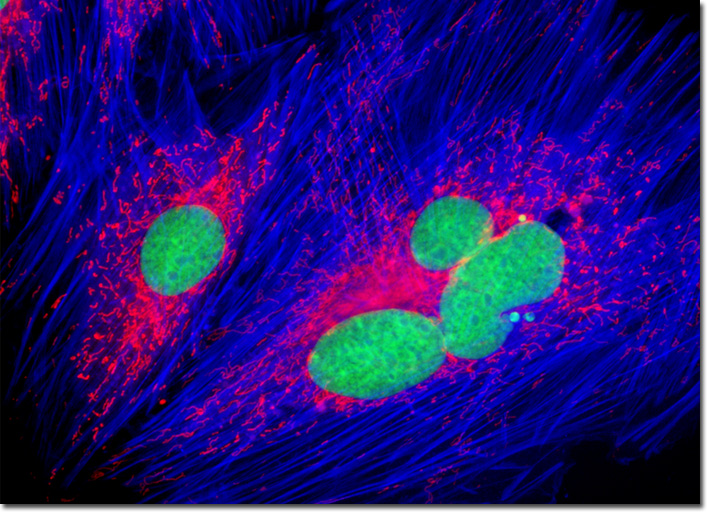Fluorescence Digital Image Gallery
Embryonic Rat Thoracic Aorta Medial Layer Myoblast Cells (A-10)
|
Smooth muscle cells, which are very similar to A-10 cells even though they were derived from an embryo, exhibit a centrally located nucleus and two or more nucleoli. The cells are each individually surrounded by an external lamina, in which numerous reticular fibers are embedded. The shape of the cells is fusiform and they lack the striations characteristic of skeletal and cardiac muscle cells. Smooth muscle cells contain many mitochondria, smooth and rough endoplasmic reticulum, Golgi bodies, and thin and thick filaments. These filaments are involved in the contraction capabilities of the cells and are composed of actin (thin filaments) and myosin (thick filaments). Focal densities scattered either in the cytoplasm or at the cell membrane serve as organizational sites for the filaments. The adherent culture of embryonic rat thoracic aorta cells presented in the digital image above was fluorescently labeled with MitoTracker Red CMXRos, Alexa Fluor 350 conjugated to phalloidin, and SYTOX Green, targeting the mitochondria, filamentous actin network, and nuclei, respectively. The bright green nuclei can be visualized along with a cluster of red mitochondria and light blue actin stress fibers. Images were recorded in grayscale with a QImaging Retiga Fast-EXi camera system coupled to an Olympus BX-51 microscope equipped with bandpass emission fluorescence filter optical blocks provided by Omega Optical. During the processing stage, individual image channels were pseudocolored with RGB values corresponding to each of the fluorophore emission spectral profiles. |
© 1995-2025 by Michael W. Davidson and The Florida State University. All Rights Reserved. No images, graphics, software, scripts, or applets may be reproduced or used in any manner without permission from the copyright holders. Use of this website means you agree to all of the Legal Terms and Conditions set forth by the owners.
This website is maintained by our
|
